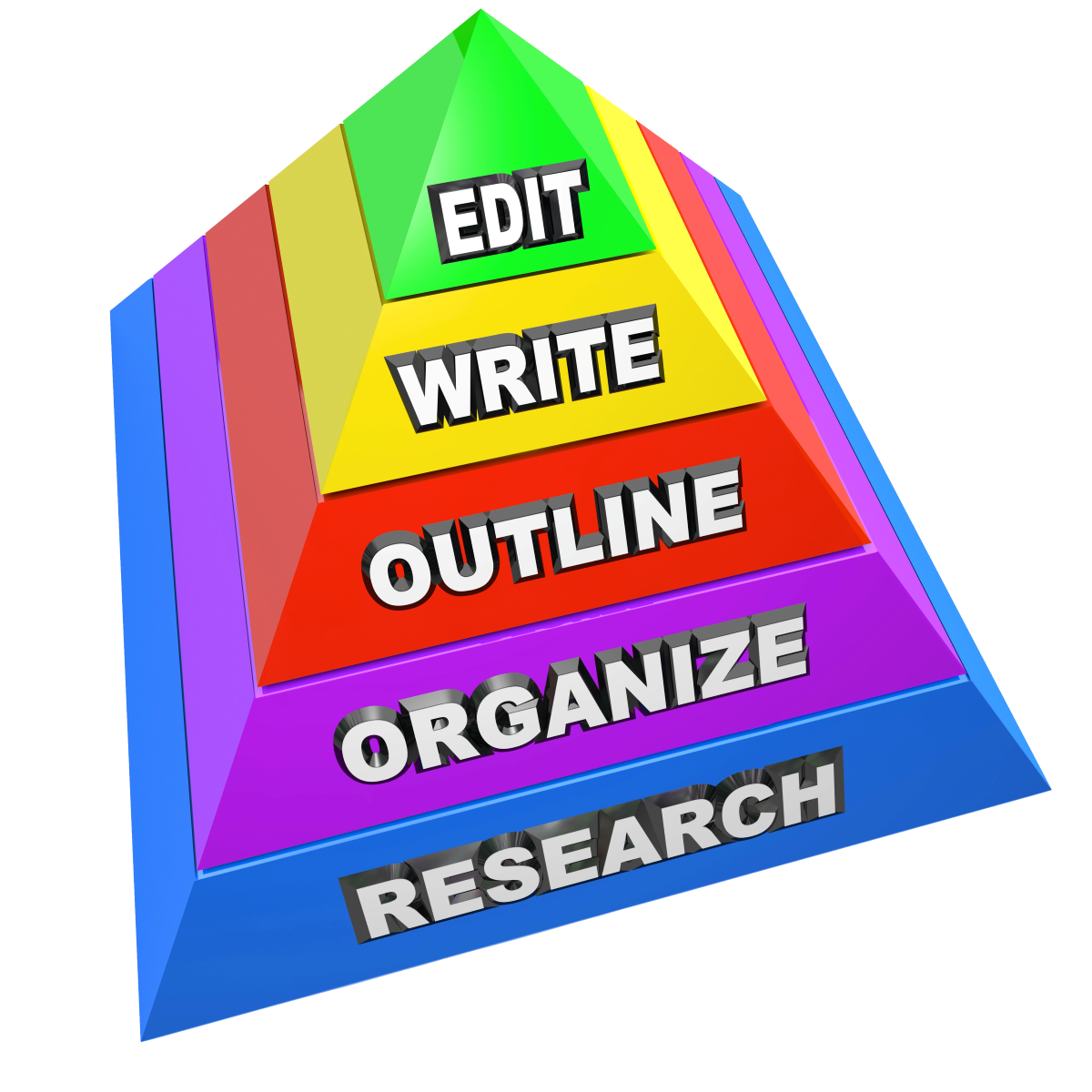How unexpected magic ignited my curiosity and helped me break free
How a single positive experience (and some necessity) can break a cycle of struggle and avoidance
This is part two of a two-part series. Part 1 highlights the trials and tribulations I face(d) with outlining given my neurodivergent brain’s quirks and tendencies.
Had you asked me a month or two ago, I would have answered emphatically that I abhor and actively hate outlining.
Little wonder. I’ve been unable to make it work for me for decades.
Rereading the first part’s closing, I make it sound like I intentionally decided to experiment my way to becoming the world’s most effective outliner.
Ha!
Quite possibly my ego got in the way there.
Admitting you’re not good at something is no fun however you look at it. And it’s hard to fight the urge to polish up the experience, make it sound like I intentionally went about making outlining work for me (and cracked it in no time flat, of course!)
That’s not how it went at all.
So let me tell you how serendipity gave me my first taste of outlining magic ever.
It happened when I wanted to write a “The Flip Side” sidenote on “It’s not about me.”
I knew I wanted readers (you) to realize there is another side to that thought. But I hadn’t a clue what I wanted to write apart for the takeaway.
Without really thinking about it, I started throwing bits and pieces into a bulleted list.
Miraculously, I stayed out of phrasing (mostly that is, in hindsight I phrased the points more like sentences than I would now) and included everything my brain came up with without so much as a critical peep (like single-brain brainstorming).
Organizing the bullets into groups and the groups into a somewhat logical flow, my argument was beginning to surface. A few iterations of brainstorming-then-organizing later, the outline sparkled and shone like none had before.
It was great.
If only all my outlining sessions were like that!
But outlining isn’t the object of the exercise, is it?
Creating a useful, effective outline — or thinking you did — is one thing. Following it to produce and publish an essay or other piece, is quite another.
It frequently foils me as well.
Not because of a lack of creative juices. Quite the opposite. They flow like a torrent, fast and furious. My brain bombards me with ideas. If I didn’t know any better, I’d say it was intentionally trying to keep me from following the outline.
Usually, all the pitfalls I face creating an outline, open up again.
However, this time, it was a breeze.
For the first time ever, I actually followed the outline I’d created. And finished that essay much sooner than usual.
Yes, I made adjustments to it while writing. But they were small ones. Mostly to make my argument flow and the examples illustrating my points fit together coherently.
It was glorious.
Like finding the pot of gold at the end of a rainbow.
I gushed about it to a friend (a fellow author). Someone who also struggles with outlining because we need to write to think (or so we think).1
All fired up with this experience, I added outlines to most of the topic ideas in my idea garden.2 Kept the bullet points short and sweet. Even less phrasing than for the “The Flip Side” sidenote.
Alas, short and sweet is not they key to success, as I found out (again).
Much to my dismay, turning the outline for my “hate-love relationship with outlining” into a publishable piece wasn’t even remotely glorious.
It was tedious.
It was exhausting.
It was disheartening.
I kept going round in circles. I was back to thinking while writing. Or the other way around. No idea. Not even in hindsight. I only know that I kept changing my mind every step of the way.
Basically, I was back to square one.
GAA!
If it hadn’t been for that one magical experience… I’d likely have given up on outlining forever and resigned myself to having to write to think things through.
But… oh, the benefits! I do so desire repeating the magic.
Organizing my thoughts and structuring my reasoning, so I can satisfy my craving for the sense of writing purposely (instead of wanderingly).
The way interesting yet irrrelevant-to-the-message points stand out — and then not just culling them, but putting them in my idea garden, ensuring I’m never lost for something to write about.
And with the limits on the time I can spend on writing, I thirst for the time saving. Because exploratory writing sounds nice ‘n all but it’s time consuming. And highly inefficient to boot.
I’d like to say I intentionally sat down, activated my curiosity and analyzed what caused the magic to flee.
Ha! Not quite.
But in the days following that disheartening experience, some realizations did pop into my consciousness.
Do not write to think (even if you think that’s what you need)
There are far more effective, and efficient, ways to help you think. Ones that avoid all (most, anyway) pitfalls of putting words to paper. I often avoid them because they have their own pitfalls. Or because my keyboard gets in the way of analog methods (it’s ridiculous, yes, but it increases the friction to using them).
Start with the end in mind: the message to convey, the affect3 to create
Knowing what you’re working towards, helps keep your mind on task and on topic. It helps you identify and cut everything that sounds interesting but doesn’t add (enough) to the main thrust of your piece.
and reminded me of that with the questions they got us to answer during their recent “Voice Mastery” class (check it out it was great!).Creating a publishable piece is more than writing the words
Writing the words, phrasing your points for optimal comprehension and effect4, is (or should be) the smallest part, definitely in terms of time. Contrary to what that pyramid suggests, editing often takes longer than writing. If you’re doing more than correcting typos, that is. And mind you, the text is just one part of a publishable piece!
Outlining is _not_ a linear process
You’ll often hear the sequence “research, organize, outline, write, edit” when someone talks about the process of writing (! see previous point) a piece.
They are indeed all activities in that process. But only the last two, “write” and “edit”, have any chance of linear execution. And editing is more effective when you do it in cycles: editing for [x], then editing for [y], then for [z], etc.Outlining is part of an iterative process
Unless you’re regurgitating something you’ve spend oodles of time thinking about, outlining is but one activity in the preparation process. Preparing to write a piece is an iterative process in which you do research, organize, and outline as needed: as the results of one inform the others.
So why did the magic escape me?
Because:
The outline I created was little more than a brain dump.
Far from mature enough to allow even a semblance of “the article mostly writes itself”.
Because:
I hadn’t given enough thought to
- what I wanted to say (without yet saying it),
- the points (arguments) to make to underpin my message,
- the order to put them in (argument flow).
And that’s exactly what I always use(d) to do…
Which, inevitably, turns writing into writing to think.
It’s also what I serendipitously avoided doing while working on the idea for my “The Flip Side of ‘It’s not about me’” sidenote.
The magic wasn’t magic at all.
It was the unavoidable result of:
Think _before_ you write!
(Until you’re 100% clear on what you want to say and how to structure it.)
That’s like “d’oh” to many of you perhaps.
Well, sorry for that. In hindsight, it’s like that to me too.
Makes me wonder why I didn’t bring my usual curiosity to bear on it before.
But hey, that’s what happens sometimes. You get caught in a loop of not liking and avoiding something. Which means no (or not enough) practice to improve your skill. Perpetuating the loop by confirming that you don’t like it whenever you give it a try.
And that’s why I’m very happy I had that serendipitous experience.
It broke me out of that loop, reminded me to use my strength: curiosity.
So, next time you try something and it doesn’t work for you, remember this:
When something doesn’t work for you, don’t stop there.
Unleash your curiosity, and
experiment your way to success!
Live long and prosper!
Marjan
I’m curious.
What do you struggle with that has you caught in an avoidance loop?
Share in the comments,
and I’ll offer some thoughts on how to break out of it.
If you liked this sidenote, be my hero and share it far and wide :)
(and subscribe to get more like these right in your inbox)
Footnotes
Yes, there’s such a thing as exploratory writing. But it’s not about creating an exploratory essay. That’s writing a retrospective on your thinking as you worked through a problem. Not your thinking as you’re thinking it!
I encountered the concept of an “idea garden” in the same place as my favorite article on outlining: the Animalz site (the website of a content marketing company). They talk about a single file where you keep all of your topic ideas for pieces, let them grow (or peter out), let them fertilize each other, combine them or split them into separate pieces. In other words: it’s where you let your ideas mature until they’re ripe for plucking.
I adopted it with fervor but adapted it to how my brain works. Meaning I don’t use a single file, but a collection of pages in a second brain. So it’s easier for me to maintain overview, and don’t need to duplicate anything to an editorial planner or work tracker.
Let me know in the comments if you’d like me to show you how I’ve set it up.
NOT a typo. I’ll leave you to explaining it to yourself.
Yes, I do mean effect here.











Love it Marjan. That special magic is what is so engaging about writing even though mostly it feels like a struggle. It's that over the rainbow feeling that you reached the pot of gold that makes it so worthwhile. The wonder of flow rather than the scrape of a pilgrim's boots on a stony path. You excelled yourself this time and I love the illustrations too.
This was really interesting.